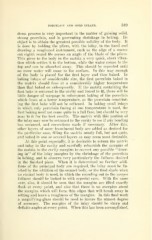Page 691 - My FlipBook
P. 691
POBCELAIN AND GOLD INLAYS. 349
down process is very important in the matter of gaining solid,
strong porcelain, and in preventing shrinkage in baking. Its
object is to obtain the greatest possible solidity of the body. It
is done by holding the pliers, with the inlay, in the hand and
drawing a roughened instrument, such as the edge of a coarse
cut eighth round file across an angle of the blade of the pliers.
This gives to the body in the matrix a very quick, short vibra-
tion which settles it to the bottom, while the water comes to the
top and can be absorbed away. This should be repeated until
no more water will come to the surface. In this way enough
of the body is placed for the first layer and then baked. In
baking inlays of considerable size, the first porcelain baked in
the matrix should fuse at a considerably higher temperature
than that baked on subsequently. If the matrix containing the
first bake is returned to the cavity and found to fit, there will be
little danger of warpage in subsequent baking of the porcelain
which fuses at a lower temperature, as the porcelain constitut-
ing the first bake will not be softened. In baking small inlays
in which only porcelain fusing at one temperature is used, the
first baking need not come quite to a fiill fuse, but should be very
near to it for the best results. The matrix with this portion of
the inlay may now be returned to the cavity to see if any bending
has occurred, and corrections made if necessary. After this,
other layers of more translucent body are added as desired for
the particular case, filling the matrix nearly full, but not quite,
and baked in one or several layers as may seem most desirable.
At this point especially, it is desirable to return the matrix
and inlay to the cavity and carefully reburnish the margins of
the matrix to the cavity margins to correct any possible "draw-
ing in" of the inlay margins by the shrinkage of the poi'celain
in baking, and to observe very particularly the fullness desired
in the finished piece. When it is determined no further addi-
tions of the principal body are required, the inlay must be fin-
ished by the addition of the enamel body, or the final shade when
no enamel body is used, in which the rounding out to the proper
fullness should be looked to with especial care. With the same
care, also, it should be seen that the margins are filled exactly
flush at every point, and also that there is no ovei-plus about
the margins which will form thin edges that will break away in
setting and leave a roughness of the margins. In this final work
a magnifying-glass should be used to insure the utmost degree
of accuracy. The margins of the inlay should be sharp and
definite angles at every point. When this has been accomplished,


